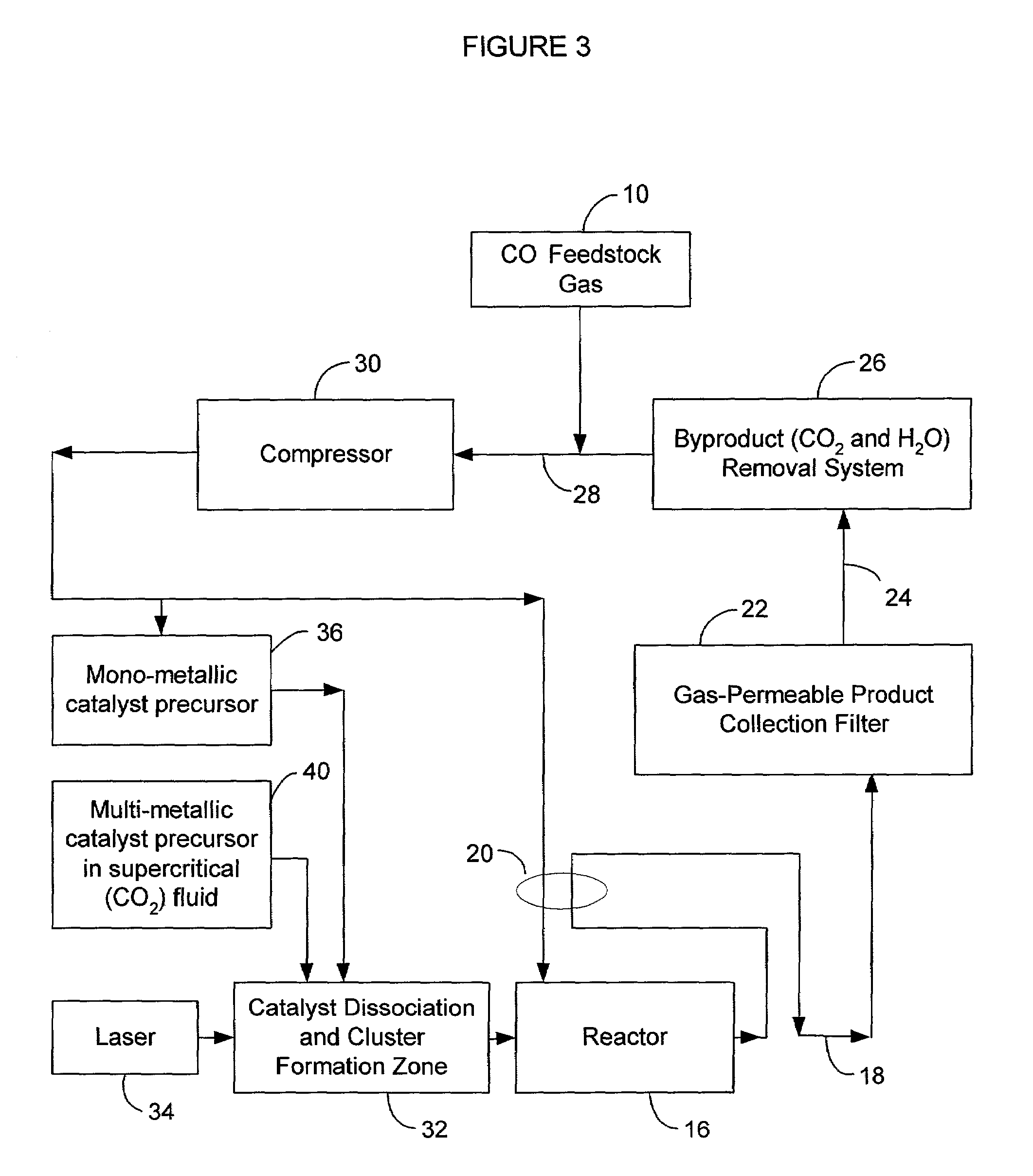Process utilizing seeds for making single-wall carbon nanotubes
a carbon nanotube and seed technology, applied in the field of single-wall carbon nanotube production, can solve the problems of high probability of colliding metal atoms sticking and adding to the cluster, and achieve the effects of high purity, homogeneity and conformational control
- Summary
- Abstract
- Description
- Claims
- Application Information
AI Technical Summary
Benefits of technology
Problems solved by technology
Method used
Image
Examples
Embodiment Construction
[0034]This invention relates to a method of producing single-wall carbon nanotubes of high purity and homogeneity at high catalyst yield. In one embodiment, the invention relates to producing single-wall carbon nanotubes in high yield, homogeneity, and conformational control, by controlling the cluster size of the catalyst through the use of multi-metallic catalyst precursors. Another means of controlling the size and homogeneity of single-wall carbon nanotubes synthesized is by providing carbon-containing seed molecules to facilitate the growth of highly uniform, high purity single-wall carbon nanotubes in high yield and conformational control. It is in the scope of this invention to use either the multi-metallic catalyst precursors for catalyst cluster control or the seed molecules separately or in combination with each other in the method. Novel methods of introducing the seed molecules and the multi-metallic catalyst precursors into the process include the use of supercritical f...
PUM
| Property | Measurement | Unit |
|---|---|---|
| temperature | aaaaa | aaaaa |
| temperature | aaaaa | aaaaa |
| peak wavelength | aaaaa | aaaaa |
Abstract
Description
Claims
Application Information
 Login to View More
Login to View More - R&D
- Intellectual Property
- Life Sciences
- Materials
- Tech Scout
- Unparalleled Data Quality
- Higher Quality Content
- 60% Fewer Hallucinations
Browse by: Latest US Patents, China's latest patents, Technical Efficacy Thesaurus, Application Domain, Technology Topic, Popular Technical Reports.
© 2025 PatSnap. All rights reserved.Legal|Privacy policy|Modern Slavery Act Transparency Statement|Sitemap|About US| Contact US: help@patsnap.com



